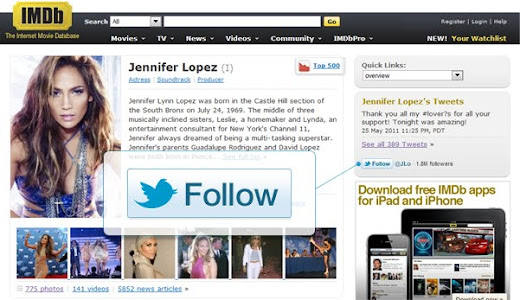So you watched the video and had a laugh? Jokes aside, did you notice the pick order of the pack? The obvious ones, The Leader (Google), The Loser (MySpace), The Challenger (Facebook) and the rest.
In every group environment, there is a social hierarchy – there is always an unofficial leader and more often than not, also an unofficial loser who seems to be at the receiving end of jokes and yet still does his best to be part of the group. Some of the other common characters are the challenger, the clown, the worker-bee, the thinker etc, many of which I’m sure you recognise .
Now if you think of a particular market space and the various brands / companies in it as a group environment, then there must also be a social hierarchy since brand / company image do interact in the marketspace (press news, user comments, editorial etc). Social media undoubtedly put this interaction on speed.
![CollegeHumor-TheRoastOfFacebook-video_thumb[3] CollegeHumor-TheRoastOfFacebook-video_thumb[3]](//lh4.ggpht.com/-l0vBvUEfyIQ/TfSlyEkLQ_I/AAAAAAAAAJE/BEVzenFTJWo/CollegeHumor-TheRoastOfFacebook-video_thumb%25255B3%25255D_thumb.jpg?imgmax=800) In the video you see The Leader (Google) gathering his group in an attempt to put down The Challenger (Facebook). The Juniors (Twitter, Foursquare) take stage to sling mud at The Challenger, while the Seniors (Youtube, LinkedIn) watch quietly from the sidelines. Juniors have less to lose and thus are typically more vocal. Seniors because of the weight they carry, tend to remain silent and weigh each word carefully before publicly expressing them. Like in the human world, The Loser always still gets his airtime (oddly, everyone would have preferred otherwise), and predictively would clumsily solidify his position as The Loser. And common sense tells you, being associated with The Loser is not good news for your position - see Gizmodo wince when mentioned by MySpace : )
In the video you see The Leader (Google) gathering his group in an attempt to put down The Challenger (Facebook). The Juniors (Twitter, Foursquare) take stage to sling mud at The Challenger, while the Seniors (Youtube, LinkedIn) watch quietly from the sidelines. Juniors have less to lose and thus are typically more vocal. Seniors because of the weight they carry, tend to remain silent and weigh each word carefully before publicly expressing them. Like in the human world, The Loser always still gets his airtime (oddly, everyone would have preferred otherwise), and predictively would clumsily solidify his position as The Loser. And common sense tells you, being associated with The Loser is not good news for your position - see Gizmodo wince when mentioned by MySpace : )
Every Brand / Company in a market space should take a good look at which position the brand / company has in the social hierarchy. In this way, the brand / company can actively take control of its interaction in the group dynamics. Without that understanding, any interaction would be passive following the group dynamics and seem out of control.
As a new comer into an existing market, it is even more important. The brand / company needs to know who the players and their positions are. Just like a new boy in the class, the newcomer’s position in the group is determined by the group. Played right and positioned right, the brand / company’s every move seem like social magic. Got put in the wrong corner and every action would just come out wrong, there would be just no doing right.
Instead of merely looking at how a brand / company is communicating with its users, we should engage group dynamics.
You might say the video is scripted by people so it mirrors people behaviour. True. But the video is merely a convenient way to illustrate the social hierarchy. Put the video aside, pick a marketspace (socialmedia, tablets, cola, fashion… )and look its social hierarchy. Tell me if you too see the various characters alive and kicking. Have fun.
---
Video “The Roast of Facebook” at CollegeHumor
Appearing in the video (did you spot them all?): Google, Facebook, MySpace, Twitter, Foursquare, JDate, Youtube, Netflix, StumbleUpon, Yahoo, LinkedIn, Flickr, Tumblr, Paypal, Digg, Hulu, Pandora, Gizmodo, Reddit, Friendster, CollegeHumor
ps. did you wonder so where is Apple in all this? Remember in your class, wasn’t there this one guy, independent, walk-his-own-path, odd, aloof, seems too cool or too something to be part of the group, never showed up at the prom, and later in life turns out to be either a hugely successful billionaire or a wannabe cross between pink floyd and andy warhol.






![CollegeHumor-TheRoastOfFacebook-video_thumb[3] CollegeHumor-TheRoastOfFacebook-video_thumb[3]](http://lh4.ggpht.com/-l0vBvUEfyIQ/TfSlyEkLQ_I/AAAAAAAAAJE/BEVzenFTJWo/CollegeHumor-TheRoastOfFacebook-video_thumb%25255B3%25255D_thumb.jpg?imgmax=800)




 Apple’s iCloud
Apple’s iCloud
 Microsoft Windows Cloud
Microsoft Windows Cloud










